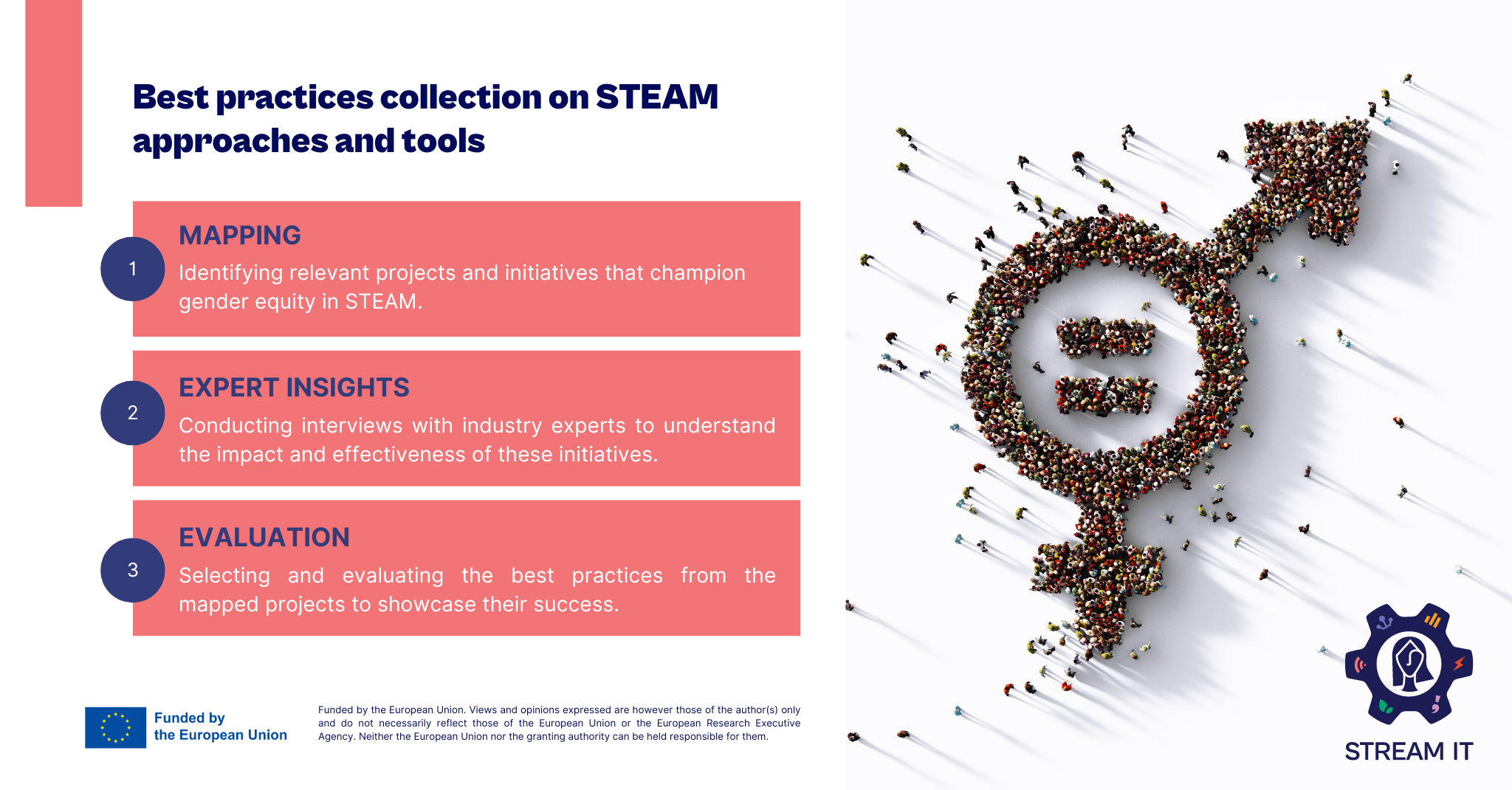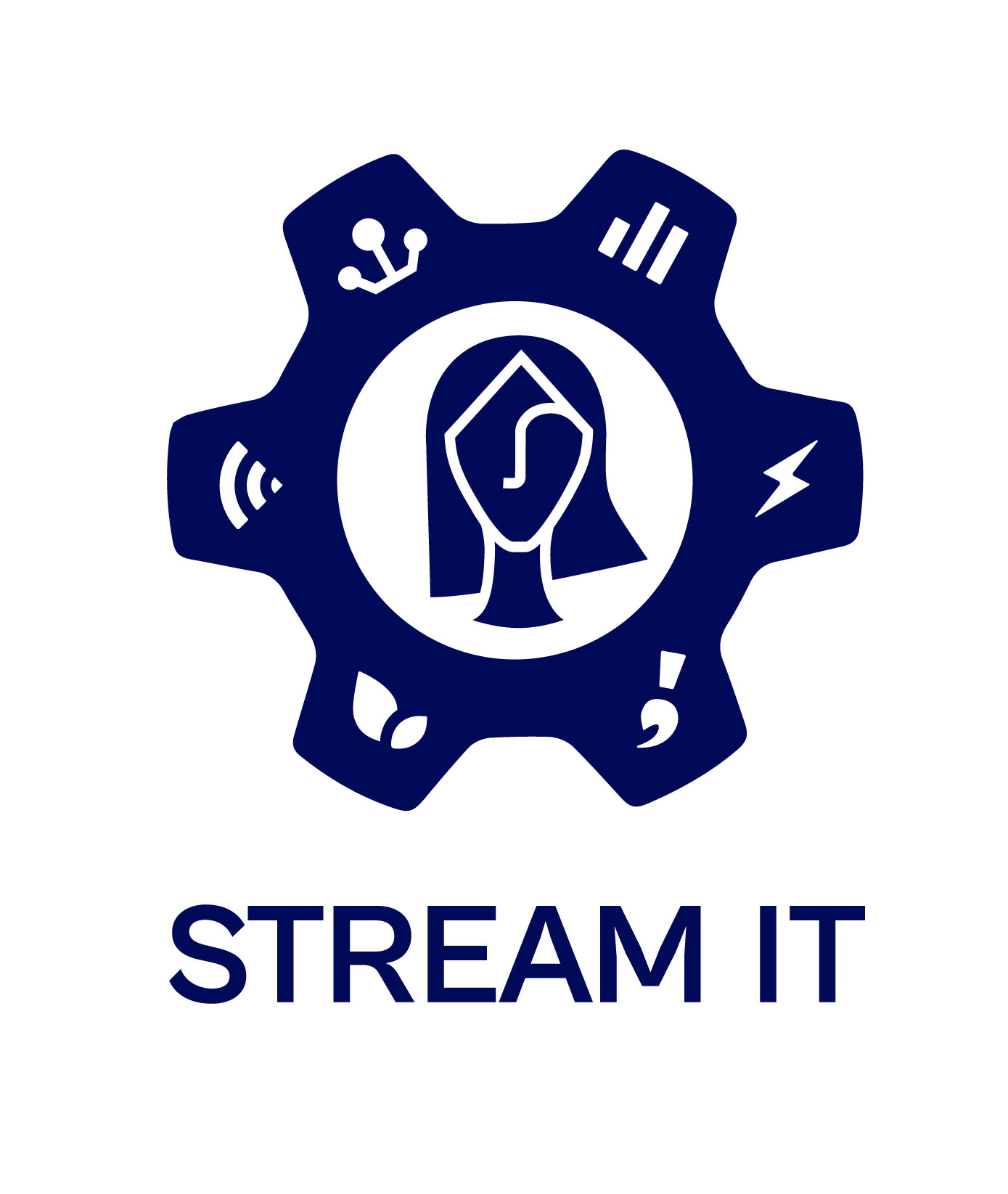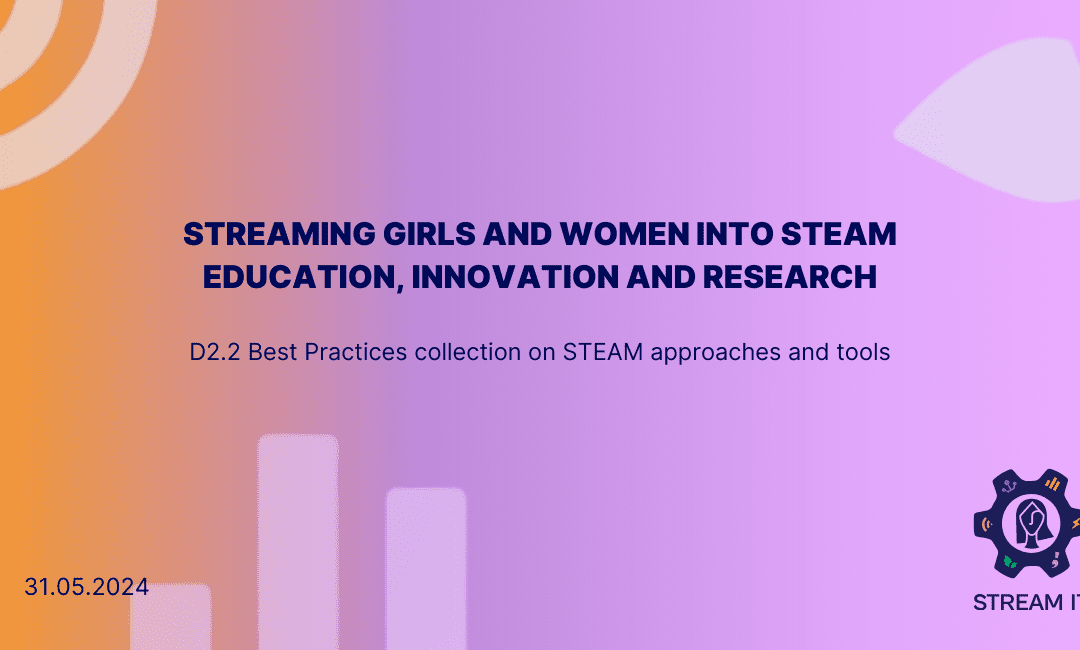This deliverable comprises a selection of pre-existing or past projects/initiatives implemented at the partner countries’ city/province, national, regional, or European levels, exemplifying best practices in empowering girls and women to pursue opportunities in STEAM fields. Mihajlo Pupin Institute (IMP) evaluated potential transferable good practices of the previous or existing initiatives in a fact sheet format. These fact sheets will be publicly accessible and ready for use both in ST(R)E(A)M IT and beyond. The lead partner of this activity is IMP while involved participating partners are: HETFA (Research Institute), RAPIV (Regional Agency for Entrepreneurship and Innovations), CESIE (Non-profit organisation), UBB (Babes Bolyai University), UBU (Universidad de Burgos), IMP (Institute Mihajlo Pupin), SV STP (Sunrise Valley Science and Technology Park (Sauletekio Slenio Mokslo Ir Technologiju Parkas).
Our report D2.2 – Best Practices Collection on STEAM approaches and tools elaborates on the following:

IMP developed a methodology for selecting good practices based on the previously adopted methodology for Task 2.1. (Mapping relevant projects and initiatives in STE(A)M and conducting interviews with experts) and created Excel Factsheets on the existing and past projects/initiatives in the empowerment of women and girls to pursue opportunities in STEAM. In the selection of best practices, we proceeded from the fact that Task 1 consists of three subtasks:
Subtask 1: Mapping of the relevant projects and initiatives in this area
Subtask 2: Interview with the experts
Subtask 3: Evaluation of the best practices
To ensure coherence and streamline of all three subtasks within Task 2.1, the methodology for T2.1 was structured so that the execution of Subtask 1 facilitates the implementation of Subtask 2 and simplifies the identification of best practices in Subtask 3. For instance, by mapping pivotal projects in STEAM for girls and women in related country, partners could identify the primary “owner” of that project, who would be the most pertinent individual to interview for Subtask 2. The pivotal projects mapped in the factsheet were further evaluated according to the pre-defined criteria for selecting best practices, which included:
- that the target group consists predominantly or exclusively of female students and/or women, and
- that the focus is on applied arts, soft skills development, and empowering women to pursue STEAM fields.
In short, partners were asked to map the most relevant city/province/national/regional/EU/global initiatives and projects and eventually to mark those that would be potentially considered as good practice. In some instances, partners inadvertently or intentionally conducted expert interviews with the owners of initiatives/projects that were marked as best practices, either by the partners themselves in the last column of the Factsheets or by the IMP’s evaluation. In this way, all sub-tasks within Task 2.1 were interconnected, ensuring the coherence of the entire Task 2.1.
A total of 21 best practices were identified, of which three at the city/province level, seven are at the national level, two at the regional level, eight at the European level and one at the global (worldwide) level.
Read the full report for deeper understanding

